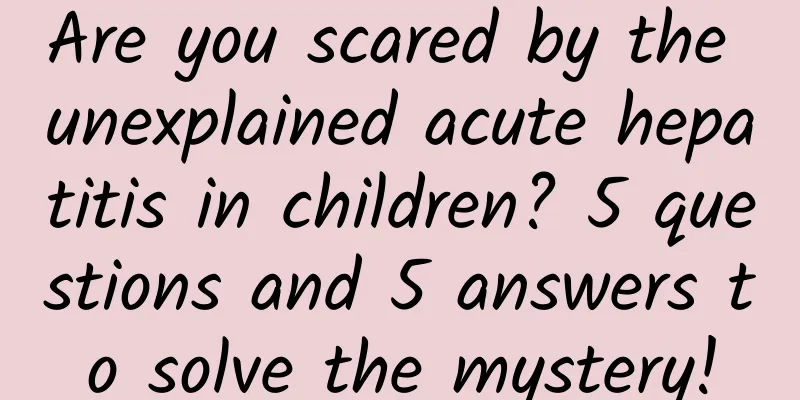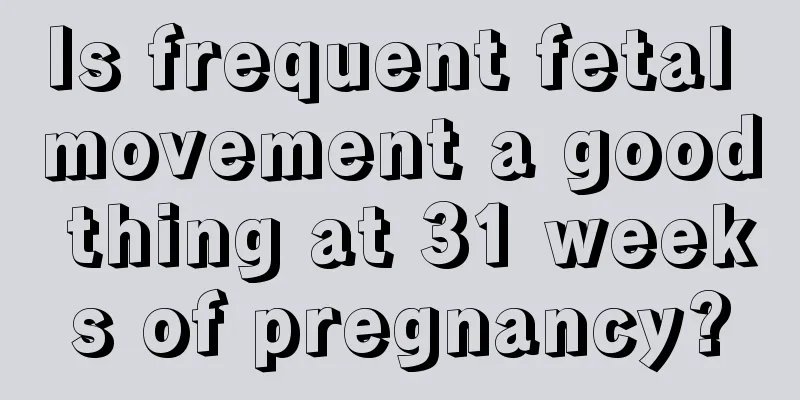Are you scared by the unexplained acute hepatitis in children? 5 questions and 5 answers to solve the mystery!

|
1. What are the epidemiological characteristics of this unexplained acute hepatitis in children? 1. The patient is young All patients were previously healthy children aged 1 month to 16 years, with the majority being under 10 years old. 2. Most cases are from Europe Distribution of cases of acute hepatitis of unknown etiology in children by country as of May 26 (n=650) Among the 650 cases, most cases (n=374, 58%) were from the European region of the World Health Organization, including 222 cases from the UK; 240 cases were from the Americas, including 216 cases from the United States; the rest were distributed in the Western Pacific, Southeast Asia, and the Eastern Mediterranean. At present, no cases of unexplained acute hepatitis in children have been found in my country. 3. There is no significant connection between cases in different regions The World Health Organization said that most cases do not appear to be linked, and a large-scale epidemiological investigation is currently underway to identify common contacts, risk factors or links between cases. Scotland has reported two cases with epidemiological links, and the Netherlands has also reported similar cases. Most countries have reported scattered cases with no obvious links. 2. What factors are not correlated? 1. Common hepatitis virus infection has been ruled out The cause and pathogenesis of this unidentified hepatitis are still under investigation, but infection with common hepatitis viruses (hepatitis A, B, C, D, and E viruses) has been ruled out, and these five common hepatitis viruses have not been detected in all case samples. 2. Temporarily exclude those who are related to the vaccination of the new coronavirus vaccine (hereinafter referred to as the new coronavirus vaccine) The World Health Organization recently said that the vast majority of patients have not received the COVID-19 vaccine, and it can be temporarily considered that this hepatitis is not an adverse reaction to the COVID-19 vaccine. In addition, on May 25, the UK Health and Safety Agency released a briefing on the investigation of this unexplained childhood hepatitis and data on cases in England, showing that none of the cases under the age of 10 in the UK had received the COVID-19 vaccine. 3. Is it related to adenovirus or COVID-19? The World Health Organization report shows that some reported cases are positive for adenovirus. However, previous adenovirus 41 infections were usually associated with gastrointestinal reactions, fever and respiratory symptoms, and no unexplained childhood hepatitis has occurred. Although adenovirus is a hypothesis of a potential cause, it cannot fully explain the clinical symptoms. Moreover, the laboratory increased the detection of adenovirus at a time when the transmission of adenovirus in the community was increasing, so the obvious association between the cause and adenovirus was accidental. Subsequent genetic identification of the virus and a comprehensive investigation of other infectious and non-infectious factors are needed to determine whether there is a potential connection between the cases. In cases where adenovirus infection cannot explain clinical symptoms, some researchers speculate that there may be factors that make adenovirus type 41 more pathogenic. Adenovirus type 41 is a relatively weak pathogen. Since the outbreak of the COVID-19 epidemic, due to the adoption of measures such as masks and home isolation, the protection of susceptible people has been strengthened, the transmission route has been blocked, and the degree of adenovirus transmission has decreased. For children who have less exposure to adenovirus, their antibody production is low, and they fail to form a pre-existing immune system, which increases their susceptibility to adenovirus. When young children are subsequently infected with common pathogens such as adenovirus, they may have an immune response or disease manifestation that is different from that of their peers. It is also possible that patients may continue to be infected with adenovirus or other viruses after being infected with the new coronavirus in the early stage, which may also lead to unusual immune responses or disease manifestations. 4. How serious is unexplained acute hepatitis in children? 1. Currently, there is limited epidemiological, laboratory, histopathological and clinical information related to the disease. 2. Existing surveillance capabilities are limited, and the actual number of cases in some cases may be underestimated. 3. The source and mode of transmission of the potential pathogen have not yet been determined, and the possibility of further spread cannot be fully assessed at this time. 4. Even though no correlation has been shown between cases, reports of a small number of epidemiologically related cases show that human-to-human transmission of this unexplained childhood hepatitis cannot be ruled out for the time being. The World Health Organization said that the clinical symptoms of this unexplained childhood hepatitis are more severe than previous cases of this kind, and the possibility of acute liver failure is higher, but the cause is still unknown. Although unexplained hepatitis is very rare, it should still be taken seriously, and the cause needs to be determined as soon as possible so that prevention and control measures can be further refined. 5. What public health response measures have been taken? 2. A case-control study is underway in the United Kingdom to determine the frequency of adenovirus testing in hospitalized cases of acute hepatitis compared with hospitalizations for other reasons. WHO regions and partners are also contributing to the study. 3. WHO continues to support information sharing with professional networks and liver specialist units. 4. WHO is developing guidelines to support Member States in the diagnosis, case investigation, reporting of clinical manifestations and clinical management of acute liver failure in children. 5. The initial investigation, which was conducted primarily in pediatric and liver centers in Europe, has been expanded. Reference: World Health Organization. Acute hepatitis of unknown aetiology in children - Multi-country[EB/OL].2022. |
<<: Do you want to know some small questions about myopia surgery?
>>: It ranks second among cancers, and 80% of patients are diagnosed in the middle and late stages
Recommend
Is a tumor in the breast necessarily cancer?
Symptoms of adenocarcinoma can vary, the most com...
What should women pay attention to when eating royal jelly during menopause
Female menopause is a period that every female fr...
Is it normal to feel pain when using a vaginal dilator?
It is normal to feel pain when using a vaginal di...
“Pull out one grey hair and 10 will grow back”, is it true?
White hair always lurks on our heads silently. If...
Can I take cold medicine during my period? Can I take cold medicine during my period?
Girls should reduce their medication intake durin...
Why is blood sugar still out of control when eating and exercising together? Here’s the reason…
Diabetes has become widely known for its characte...
New evidence that milk causes cancer? Don’t panic, this study should be interpreted like this
gossip "Studies have shown that drinking mil...
What are the methods to remove acne scars?
Acne always affects our lives. The treatment of a...
What is “lacunar infarction”? How to deal with it?
"Lacunar cerebral infarction" is a smal...
What should I do if my pregnant woman's blood test shows high white blood cell count?
Many women have a good physical constitution, but...
When is the best time to have an abortion during pregnancy?
In the same hospital and with the same gynecologi...
The benefits of eating lotus root powder every day for women
Lotus root powder is a traditional Han food in th...
A few simple tips to relieve dry retching in pregnant women
Dry retching is a symptom that many pregnant wome...
Will short menstrual cycles lead to early menopause?
There are many reasons that lead to short menstru...
Can I eat King Oyster Mushroom after abortion?
Everyone knows that King Oyster Mushroom contains...









